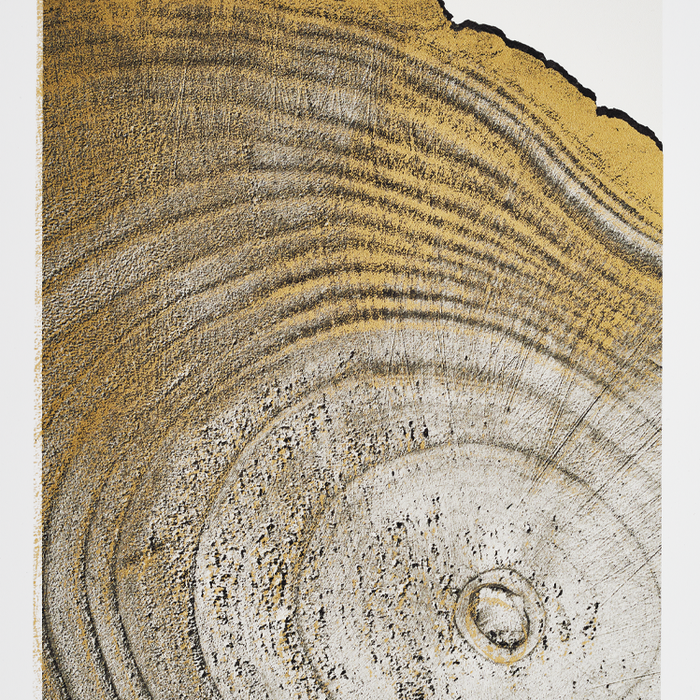
Into The Woods
1.9.24
Derived or inspired by trees — their bark, roots, resins and leaves — some bushes, mosses and grasses (such as vetiver), woods are commonly used ingredients that add a warm, earthy quality as well as richness, complexity and sophistication to any fragrance composition.
They are diverse and can be sensual and creamy (sandalwood), dry and smoky (cedar) and intense and opulent (oud). Long lasting, they are often used as base and heart notes to anchor and enhance other ingredients. They are frequently combined with other woods but also with amber, citrus, fruity and floral head notes which add freshness. First appearing on the perfume horizon in the 1940s, woody fragrances’ potent character meant they were seen as primarily male scents. Today, however, they appeal to both sexes who enjoy the timeless, natural aromas of wood.
OUD
Literally meaning ‘wood’ in Arabic, oud (also known as agar or aloe wood) is an intensely fragrant oil used in perfumery and spiritual rituals since biblical times, especially in Southeast Asia and the Middle East. Extracted from a resin in the heartwood of aquilaria trees (a native to the rainforests of Bangladesh, Indonesia and Thailand), oud is often used as a base note, with its rich, earthy, animalic and smoky accords providing a sensual dry-down. Oud’s scent profile, however, depends on its perfume partners — a spiciness with citrus, or added warmth with buttery iris. Often referred to as ‘liquid gold’, due to its rarity and high cost, oud is one of the most coveted ingredients in modern perfumery. You can find oud in The House of Creed’s Oud Zarian, Royal Oud and Royal Princess Oud.
GUAIAC
Pronounced ‘gwy-ack’, this exotic oil comes from the Palo Santo (Bulnesia sarmientoi) tree, a native of the north coast of South America that’s been used for centuries in medicine and to banish evil spirits. The species has proved hard to cultivate in plantations but can now be obtained from wild woodland in a sustainable way. The scent profile of guaiac varies from sweet, balsamic and vanilla-like to woody and smoky, leathery and tar-like. It is often used as heart or base notes in tobacco and leather fragrances and blends well with bergamot, jasmine, cloves, musk, amber and other woods. You can find guaiac in The House of Creed’s Original Vétiver and Royal Oud.
CINNAMON
Sweet, spicy, vanilla-esque and peppery are some of the olfactory adjectives applied to cinnamon. Steam-distilled from the dried bark of the Cinnamomum verum tree (a native of tropical Southeast Asia), the oil has been used since ancient times when it was highly valued for its medicinal and aphrodisiac properties. Today, cinnamon is mainly cultivated in China, Sri Lanka, the Caribbean, Indonesia and India. The sweet spice lends warmth and depth as heart or base notes and is commonly found in oriental perfumes where it is blended with other woods, spices, amber and citrus notes. You can find cinnamon in The House of Creed’s Absolu Aventus.
VETIVER
A signature ingredient in many Creed fragrances, vetiver oil is extracted from the sun-dried root of a perennial grass (Chrysopogon zizanioides), a distant cousin of lemongrass and citronella. Originating in Southeast Asia but now grown commercially in India, Indonesia, West Africa and Haiti, vetiver has a scent that’s initially earthy, woody and smoky but slowly morphs into sweet and slightly floral (think violet-like). Long used in perfumery and now more popular than ever, versatile vetiver is used across all fragrance families for its unique scent and fixative properties. It is often paired with citrus, other woods, vanilla and rose. You can find vetiver in The House of Creed’s Aventus Cologne, Himalaya and Viking.
CEDAR
Cedar is an important wood in perfumery due to its ability to run through a fragrance from head to heart to base notes. Virginia, Red or Texas cedars (Juniperus Virginiana and Mexicana) are the two main species used, with the perfume oil obtained via steam distillation of wood chips. A dry, vibrant, woody note, cedar brings structure and elegance to a fragrance. It can be found in perfumes across all olfactory families — citrus, floral, ferns, oriental, chypres, leathers and, of course, woods — partnering well with other woods as well as citrus fruits, especially grapefruit. You can find cedarwood in The House of Creed’s Aventus, Aventus for Her, Love in White and Love in Black.
SILVER BIRCH
This ethereal tree (Betula lenta) is used in perfumery because of its strong scent that doesn’t fade easily over time — making it a great base note for blending with other oils. Its essential oil is extracted from the bark which must be soaked for up to 12 hours before being steam-distilled. Birch can be very versatile depending on what it’s paired with. It can imbue a fragrance with leathery, smoky and tar-like nuances, as well as an earthy, vanilla-like freshness — cedarwood and eucalyptus are common perfume partners. Native to eastern North America, most of the birch oil used in perfumery comes from Russia and Northern Europe. You can find birch in The House of Creed’s Aventus, Aventus Cologne and Spice and Wood.
SANDALWOOD
Sandalwood is one of the rarest, oldest and most expensive ingredients used in perfumery. A protected species (Santalum album), this Asian native, now also grown in Australia and New Caledonia, is only cut after 30 to 50 years when the tree is at its peak and most fragrant and only then can its oil be extracted. Sandalwood can be creamy, powdery, balsamic, sensual, even a little leathery and animalic, and due to its tenacity it’s often used as a base note to add depth and warmth. It blends beautifully with rose, geranium, citrus fruits and aromatics such as frankincense. You can find sandalwood in The House of Creed’s Aventus for Her, Bois Du Portugal, Erolfa, Fleurissimo and Himalaya.